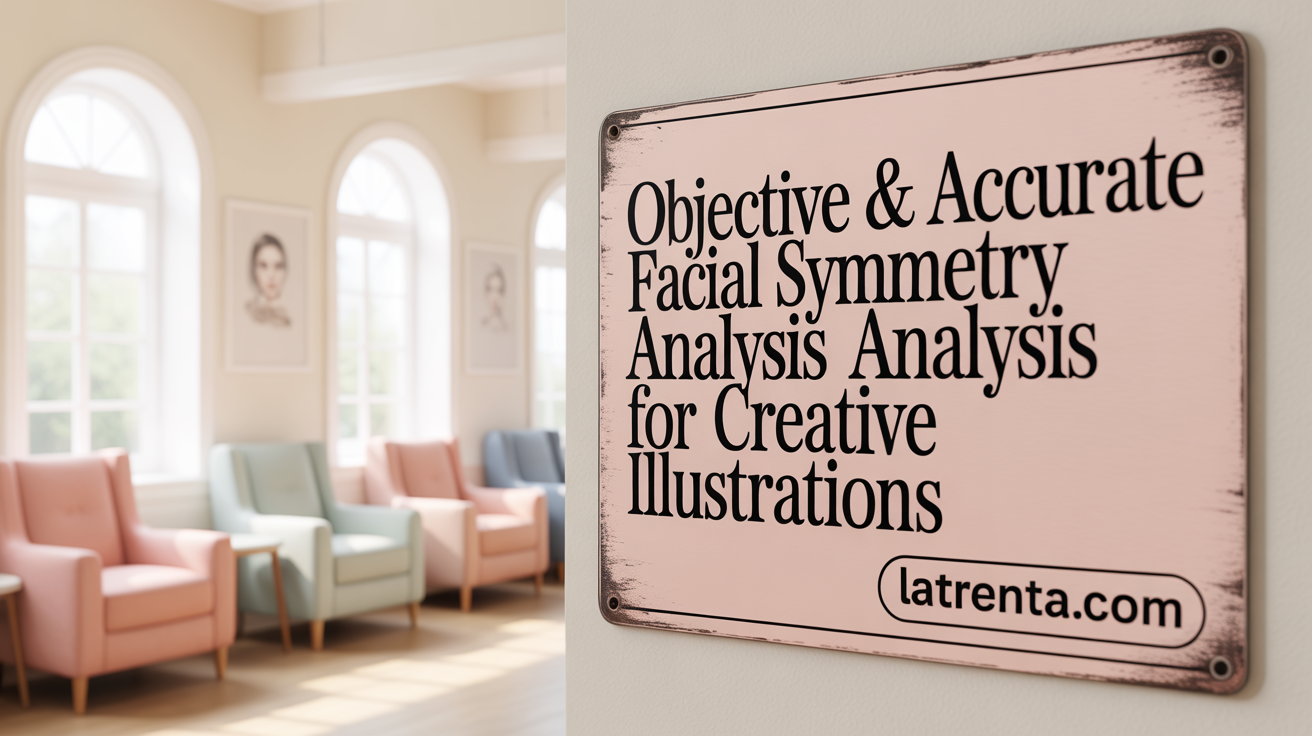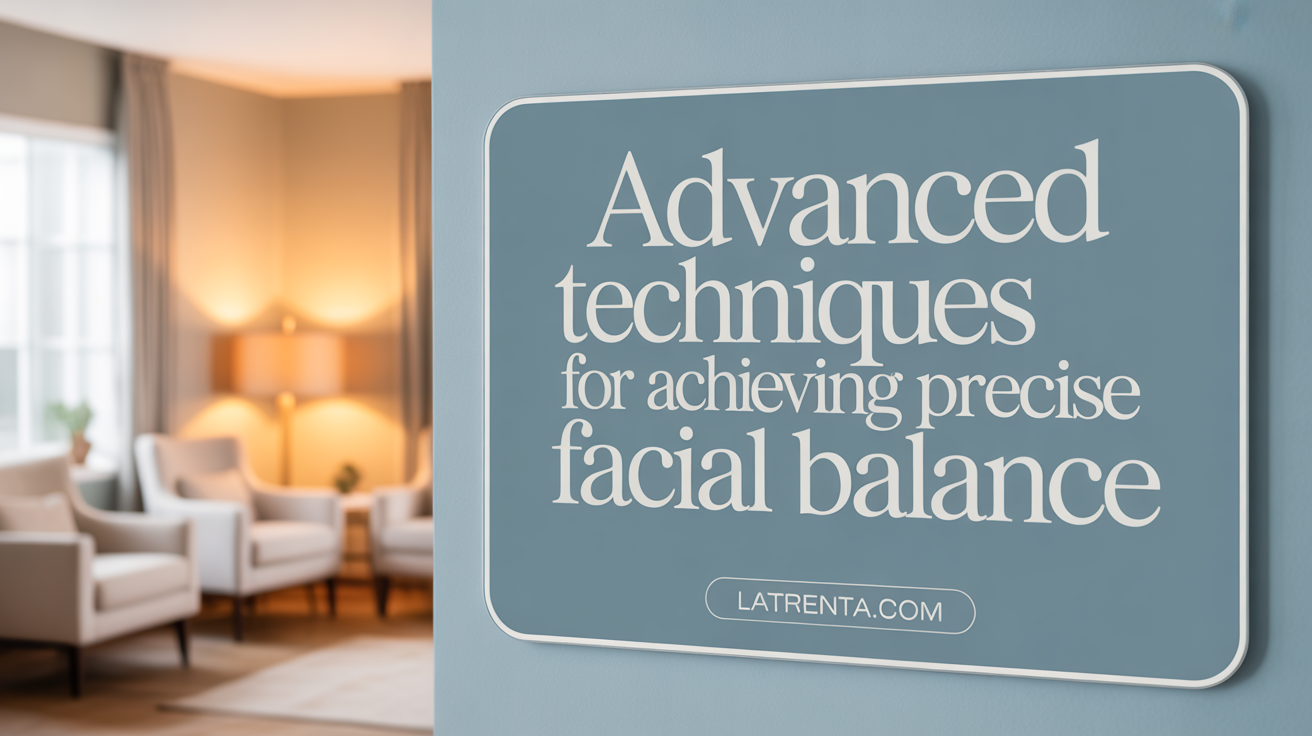Understanding the Rise of Non-Surgical Facial Balancing
In recent years, non-surgical facial symmetry correction methods have gained significant attention for their ability to enhance facial harmony and balance without invasive surgery. These techniques, ranging from injectable neurotoxins and dermal fillers to advanced skin-tightening technologies, offer natural-looking and customizable facial enhancements that align with aesthetic principles grounded in scientific evaluation. This article explores the variety of non-surgical options available, their effectiveness, aesthetic foundations, and the supportive data behind their use in achieving balanced facial proportions, while also analyzing candidate suitability and the distinction from surgical alternatives.
Non-Surgical Methods for Correcting Facial Asymmetry: Options and Mechanisms
What non-surgical methods are available to fix facial asymmetry?
Correcting facial asymmetry without surgery involves several innovative treatments tailored to balance and enhance facial features. Common options include neurotoxins like Botox or Dysport, dermal fillers, radiofrequency procedures such as ThermiSmooth, and thread lifts.
Botox and Dysport are used to relax overactive muscles, smoothing wrinkles and correcting muscle-related imbalances that contribute to asymmetry. These treatments are especially effective in addressing dynamic facial asymmetries caused by muscle activity.
Dermal fillers, particularly those based on hyaluronic acid, are injected to add volume or contour deficiencies, helping to even out asymmetrical features such as lips, cheeks, and jawlines. The results are noticeable immediately and can be fine-tuned during follow-up sessions.
Radiofrequency treatments like ThermiSmooth use heat to stimulate collagen production, tightening skin and soft tissue, which can improve soft tissue support and overall facial harmony. These procedures enhance the skin's elasticity, leading to more balanced facial contours.
Thread lifts involve the insertion of dissolvable threads that lift and reposition sagging tissues, subtly improving facial symmetry without the need for invasive surgery.
Most of these non-surgical methods offer temporary results, lasting from a few months up to about a year. They can be combined strategically to address multiple asymmetries and personalized according to individual needs, making them versatile options for facial balance restoration.
The Role of Botox and Dermal Fillers in Achieving Facial Harmony

How do Botox and dermal fillers contribute to achieving a symmetrical and balanced face?
Botox plays a significant role in shaping facial symmetry by relaxing targeted muscles that may be causing asymmetries. For example, if one eyebrow droops or if muscle activity on one side of the face is more dominant, Botox can be precisely injected to relax those muscles, resulting in a more balanced and harmonious appearance. This effect not only improves static facial symmetry but also enhances the dynamic balance during expressions.
Dermal fillers, on the other hand, are used to restore volume and improve contours in areas such as the cheeks, chin, lips, and jawline. By adding volume where it is lacking and smoothing irregularities, fillers effectively correct disproportionate features. They can elevate a sagging cheek, define the jawline, or plump thin lips—features that contribute substantially to facial harmony.
When combined, Botox and dermal fillers create a powerful synergy. Botox addresses muscle movements that can cause unevenness or asymmetry, while fillers refine the facial contours and proportions for a more balanced look. This dual approach allows aesthetic practitioners to tailor treatments to individual needs, enhancing natural beauty without overcorrection.
Achieving optimal results relies heavily on the expertise of trained professionals. Precise administration, understanding individual facial anatomy, and artistic judgment are crucial to ensure the enhancements look natural and harmonious. Proper planning and execution help avoid exaggerated or unnatural results, emphasizing subtlety and balance.
Overall, the combined use of Botox and dermal fillers offers a non-surgical pathway to facial symmetry, improving both appearance and confidence while maintaining natural features.
Selecting Suitable Candidates for Non-Surgical Facial Symmetry Enhancement
What criteria determine whether someone is a suitable candidate for non-surgical facial symmetry correction?
Candidates interested in non-surgical options typically include adults who wish to improve mild to moderate facial asymmetry or address volume loss. These individuals usually seek subtle, natural-looking results without the downtime associated with surgery.
Good overall health is essential. Candidates should have healthy skin, no active infections, and stable medical conditions that could interfere with healing or treatment outcomes. Realistic expectations are crucial, as non-surgical methods mainly provide subtle improvements rather than dramatic changes.
A thorough consultation with a qualified practitioner helps assess facial anatomy and determine the most appropriate treatments. Personalization is vital because each face has unique features and proportions. Practitioners consider individual facial structures, aging signs, and aesthetic goals to create a tailored treatment plan.
Candidates must be willing to adhere to pre- and post-treatment guidelines, such as avoiding alcohol, blood thinners, excessive heat, and strenuous activity around the treatment time. These steps help minimize risks like swelling or bruising and promote optimal results.
However, it's important to recognize that non-surgical methods have limitations. Severe structural or skeletal asymmetries often require surgical correction, such as orthognathic procedures or jaw reconstruction, which provide more permanent and substantial changes.
In summary, suitable candidates are those seeking gentle, natural improvements in facial balance, are in good health, and have realistic goals aligned with the capabilities of non-invasive treatments. Consulting a specialist is the best way to evaluate individual needs and determine the most effective approach.
Balancing Key Facial Features: Non-Invasive Techniques for Nose, Chin, and Lips

How do non-invasive treatments compare for balancing features such as the nose, chin, and lips?
Non-surgical approaches to improving the balance of facial features like the nose, chin, and lips primarily involve dermal fillers and botulinum toxin. These methods provide fast results that are usually temporary, lasting from several months to about a year, and involve minimal downtime.
For nasal reshaping, non-surgical rhinoplasty is popular. This technique uses hyaluronic acid fillers to smooth out minor irregularities or add slight augmentation to the nose tip or bridge. However, it cannot address structural issues such as a large dorsal hump or significant asymmetry. Surgical rhinoplasty remains the definitive solution for more extensive, permanent changes.
Enhancement of the chin and lips through injectable fillers is highly effective for correcting asymmetries and improving proportions. Chin fillers can make the jawline appear more defined and balanced, while lip fillers can add volume and reshape lip contours. These treatments typically last between 6 to 18 months, depending on the type of filler used, and are suitable for subtle, natural improvements.
Botulinum toxin also plays a role in balancing facial features. It relaxes specific muscles that may cause muscular imbalances or asymmetries, such as around the lips or jawline. This helps create symmetry and reduces strain caused by muscular overactivity.
Compared to surgical procedures, non-invasive treatments are safer and have less recovery time. They are ideal for individuals seeking minor adjustments and those who prefer reversible options. Nonetheless, their effectiveness depends on individual anatomy and expectations. For significant or structural corrections, surgical methods offer more permanent and dramatic results.
Ultimately, choosing between non-surgical and surgical options should involve consultation with a qualified specialist who can evaluate individual facial features and aesthetic goals.
Aesthetic Principles Behind Non-Surgical Facial Balancing and Expected Outcomes

What aesthetic principles underlie non-surgical facial balancing techniques and what outcomes should patients expect?
Non-surgical facial balancing is rooted in fundamental aesthetic principles that prioritize harmony, proportion, and symmetry. One of the core ideas is achieving a natural, balanced appearance by aligning facial features in a way that respects the individual’s unique anatomy.
A central concept used in these techniques is the Golden Ratio, which offers a mathematical guideline for ideal facial proportions. Features that adhere closely to this ratio are typically perceived as more attractive. Practitioners analyze facial subunits—such as the forehead, cheeks, and jawline—to create a cohesive, proportionate look.
The treatment goals involve correcting volume deficits, softening asymmetries, and relaxing hyperactive muscles, often with dermal fillers and neuromodulators like Botox. These interventions are designed to subtly enhance facial contours, making improvements appear organic and consistent with the person’s natural features.
Because these approaches focus on individualized assessment, results are not overly dramatic but instead emphasize refinement. Patients can expect a rejuvenated, more harmonious appearance that aligns with their specific facial structure.
While the effects are often immediate, full results develop over a few days as swelling subsides. Patients enjoy benefits such as improved facial proportions, enhanced contours, and a more youthful, balanced look, all achieved with minimal downtime.
Importantly, these techniques also offer functional advantages. For example, Botox can relax muscles responsible for certain asymmetries or wrinkles, contributing not only to aesthetics but also easing muscle tension.
Psychologically, many notice increased confidence and well-being as their facial harmony improves. Since the modifications respect personal and cultural standards of beauty, the results tend to boost self-esteem without looking artificial.
Ultimately, the guiding aesthetic principles emphasize a personalized, science-based approach to naturally enhancing facial harmony. The outcomes blend technical precision with artistry, promoting a subtle, attractive appearance that complements the individual’s unique identity and aesthetic goals.
Common Causes of Facial Asymmetry and Their Non-Surgical Solutions
Facial asymmetry can stem from numerous factors, including genetic predispositions, the natural aging process, past trauma, dental issues, neurological conditions like Bell’s palsy, and lifestyle influences such as habits or environmental factors. These causes can lead to uneven features, loss of volume, or muscle imbalances that affect overall facial harmony.
Non-surgical treatments provide effective options to address mild to moderate asymmetries. Dermal fillers, especially hyaluronic acid-based products, are used to restore volume to areas like the cheeks, lips, or jawline, helping to even out contours. Botox and Dysport relax overactive or asymmetric muscles, smoothing out wrinkles and improving muscle-induced imbalances.
Radiofrequency treatments, such as ThermiSmooth, can tighten skin tissue, reducing laxity that contributes to asymmetry. These minimally invasive procedures typically involve little downtime and can be tailored to specific facial regions for precise correction.
While non-surgical methods excel in improving soft tissue discrepancies and minor structural differences, they are less suitable for significant skeletal deformities or severe asymmetries. In such cases, combining non-invasive procedures with surgical options like implants, fat grafting, or orthognathic surgery may be necessary.
Overall, non-surgical options in facial balancing are safe, customizable, and reversible. They focus on improving facial harmony by addressing volume deficits, muscle activity, and skin quality, thereby offering a flexible approach for patients seeking subtle enhancements without anesthesia or long recovery periods. When used appropriately, these treatments can significantly improve symmetry and boost confidence, making them a popular choice for many seeking facial refinement.
Scientific Assessment and Imaging Techniques for Evaluating Symmetry Improvements
 How are improvements in facial symmetry after non-surgical treatments scientifically measured?
How are improvements in facial symmetry after non-surgical treatments scientifically measured?
Advancements in imaging technology and computational analysis allow for precise evaluation of facial symmetry. One common method involves 3D imaging, which can be obtained through CT scans or stereophotogrammetry systems like VECTRA H1. These devices capture detailed surface and volumetric data of facial structures, enabling clinicians to analyze subtle asymmetries with high accuracy.
In practice, specific anatomical landmarks—such as the corners of the eyes, the tip of the nose, or the corners of the mouth—are pinpointed within a three-dimensional coordinate system. This system is typically centered in the cranial cavity to ensure consistency. Measurements are taken along the X (left-right), Y (vertical), and Z (front-back) axes both before and after treatment.
To quantify the degree of asymmetry, metrics like the root mean square deviation (RMSD) are employed. RMSD provides an objective score indicating how closely the features on each side of the face match. Research has demonstrated that effective non-surgical interventions result in statistically significant reductions in these asymmetry scores.
Innovative computational methods further enhance assessment accuracy. For instance, hyperdimensional computing and facial contour analysis leverage artificial intelligence and advanced algorithms to rapidly analyze face symmetry. These tools facilitate quick, web-based evaluations that can be used real-time in clinic settings.
Importantly, these objective measures are often complemented by clinician and patient subjective evaluations of facial harmony. Studies reveal a strong correlation between quantitative data—such as RMSD reductions—and aesthetic judgments, validating the accuracy and relevance of these technological assessments.
Overall, the combination of high-resolution 3D imaging, precise anatomical point analysis, and sophisticated computational techniques provides a comprehensive framework for objectively measuring improvements in facial symmetry following non-surgical treatments. This approach supports tailored treatment planning and enhances outcomes assessment, ensuring patients achieve more balanced and harmonious facial features.
Comparing Surgical and Non-Surgical Facial Balancing: Benefits and Risks
How do surgical and non-surgical approaches to facial balancing differ in process, benefits, and risks?
Surgical facial balancing typically involves invasive procedures such as facelifts, rhinoplasty, facial implants, or jawline surgeries. These methods aim for a significant change, often addressing structural issues like chin retrusion, asymmetrical jawlines, or severe sagging. Surgery provides long-lasting or permanent results, which can dramatically enhance facial harmony and restore youthful proportions.
However, surgery involves higher costs, increased risks, and longer recovery periods. Patients must tolerate swelling, bruising, and potential complications such as infection or nerve damage. Additionally, surgical procedures require careful planning, and results are generally irreversible, emphasizing the importance of professional assessment and realistic expectations.
In contrast, non-surgical options use minimally invasive techniques like dermal fillers, Botox, and skin tightening devices such as ThermiSmooth. These procedures are quicker, usually completed within an hour, with little to no downtime. They are designed to subtly modify facial contours, smooth wrinkles, and correct minor asymmetries.
The benefits of non-surgical treatments include lower risks, affordability, and the ability to adjust or reverse results over time. Results are typically temporary, lasting from a few months up to about a year, which requires maintenance treatments to sustain the look. These options are ideal for individuals with mild to moderate concerns, early signs of aging, or those hesitant about surgery.
While surgical procedures offer permanence, they come with a higher chance of adverse effects and longer healing phases. Non-surgical methods are safer for most, but they might not be suitable for severe structural issues or significant asymmetry.
Many patients opt for an integrated approach, combining non-surgical treatments in the early stages with surgical options later if needed. This strategic combination allows for customized facial balancing that enhances natural aesthetics while considering safety and personal preferences.
Ultimately, choosing between surgical and non-surgical facial balancing depends on individual goals, medical suitability, budget, and comfort with invasiveness. Consulting with a qualified specialist like Dr. Cat can help develop a personalized plan that aligns with each patient’s needs and expectations.
Integrating Advanced Technologies and Personalized Approaches in Non-Surgical Facial Symmetry

High-resolution 3D imaging and augmented reality for planning
Modern non-surgical facial balancing heavily relies on visual and analytical tools such as high-resolution 3D imaging and augmented reality. These technologies allow practitioners to create detailed digital models of a patient’s face, helping visualize potential outcomes before any procedures are performed. Augmented reality can project simulated results onto a patient’s face in real time, enhancing communication and ensuring alignment of aesthetic goals.
Use of AI and facial analysis software
Artificial intelligence (AI) and specialized facial analysis software further revolutionize treatment planning. These systems analyze facial symmetry, proportions, and key features—such as the nasofrontal angle, chin retrusion, and lip line—using validated assessment tools. AI can quantify the degree of asymmetry and predict how adjustments like fillers or Botox will impact overall harmony, providing a more objective and accurate approach.
Customization of treatment plans based on anatomy and goals
Every face is unique, requiring tailored approaches. Advanced technologies enable practitioners to base treatment plans on detailed facial anatomy, including skeletal structure, soft tissue distribution, and aging signs. This individualized planning ensures that procedures such as dermal fillers, neuromodulators, or combined modalities address specific needs—whether correcting asymmetries, restoring volume, or enhancing proportions—while respecting natural facial harmony.
Combining multiple non-surgical modalities for optimal results
To achieve balanced, natural-looking results, many practitioners now adopt multimodal strategies. Combining treatments like dermal fillers for volume, Botox for muscle relaxation, and radiofrequency or laser therapies for skin tightening allows comprehensive facial harmonization. Advanced imaging and analysis guide these combinations, ensuring each intervention complements the others and enhances overall symmetry with minimal downtime.
Achieving Balanced Beauty with Non-Surgical Facial Techniques
Non-surgical facial symmetry enhancement offers a compelling blend of science, artistry, and technology to safely and effectively improve facial harmony. Through carefully selected injectable treatments, skin-tightening procedures, and the integration of cutting-edge imaging and analysis tools, patients can experience subtle yet impactful improvements aligned with aesthetic principles such as the golden ratio. While these methods offer temporary results with minimal downtime and reduced risk compared to surgery, personalized assessment and expert administration remain paramount. Ultimately, non-surgical treatments empower individuals seeking natural, balanced facial aesthetics and increased confidence, making them vital tools in modern aesthetic medicine's evolving landscape.
References
- Correcting Facial Asymmetry: Surgical & Non-Surgical Methods
- Facial Balancing Techniques in Aesthetic Practice | Hubmed
- In What Ways Can Non-Surgical Face Lifts In 2024 Help Enhance ...
- Mastering Facial Harmony: The Art of Facial Balancing in Portland
- Facial Balancing In Old Bridge, NJ | Facial Contouring
- [PDF] Balancing Act: Considerations for profiloplasty assessment in ...
- Improve Facial Symmetry with Dermal Fillers - Aesthetica Medical
- Facial Balancing - Enhance Symmetry Non-Surgically
